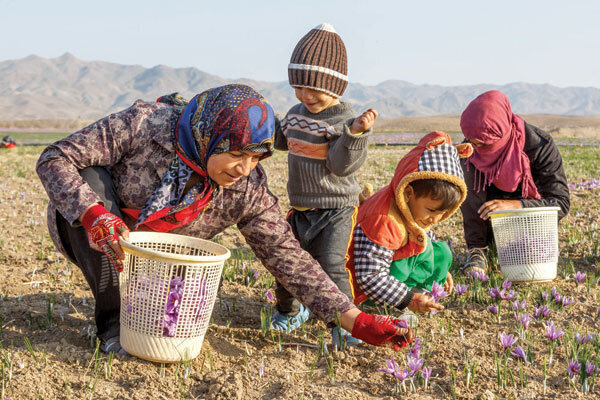FAO calls for promoting climate-smart agriculture to deal with pandemic

TEHRAN - The Food and Agriculture Organization of the United Nations (FAO) has called on countries around the world to deal with the widespread effects of the global COVID-19 pandemic through promoting climate-smart and environmentally friendly agricultural practices, such as agro-ecology, that preserve the Earth’s natural resources.
In this regard, FAO urges all involved stakeholders across the world to link arms to urgently address the nutritional and livelihood gaps that have engulfed the most vulnerable groups of populations amid the COVID-19 pandemic, on the occasion of the World Food Day, October 16.
Recent estimates released by the Organization indicate that the COVID-19 pandemic and its collateral economic consequences may add between 83 to 132 million individuals to the total number of undernourished people in the world in 2020; the nutritional status of the most vulnerable population groups is likely to further deteriorate due to the health and socio-economic impacts of COVID-19.
The COVID-19 response is an opportunity to build back better by making food systems more resilient to shocks and more sustainable through agricultural practices that work with nature, according to a press release published by the FAO office in Iran.
Iran also called on the United Nations Food and Agriculture Organization to move forward to collective policies and response programs for member countries in the region to place food and agriculture at the center of the COVID-19 socio-economic response, at the 35th FAO Regional Conference for the Near East.
The country’s ad interim envoy to FAO, Shahin Ghoraishizadeh, shared the main adaptive strategies implemented by the Government to tackle challenges posed by COVID-19 to food and agriculture activities of the country.
According to Ghoraishizadeh, “in [this] region, the spread of COVID-19 has affected the vulnerability of millions of small producers and agricultural workers and intensified challenges for this large part of the population.”
Iran hopes “FAO, through this conference, provides a starting point to move forward collective policies and response programs for member countries in the region; to place food and agriculture at the center of the COVID-19 socio-economic response strategies,” Ghoraishizadeh said in his concluding remarks.
Hunger increases worldwide
A report jointly prepared by FAO, IFAD, UNICEF, WFP, and WHO shows that currently around 690 million people or 8.9 percent of the world population are hungry. Compared to the previous figures, this number is up by 10 million people in one year and by nearly 60 million in five years.
“The State of Food Security and Nutrition in the World 2020” also indicates that the number of people affected by severe food insecurity has experienced a similar upward trend over the last five years. In 2019, close to 750 million—or nearly one in ten people in the world—were exposed to severe levels of food insecurity.
The figures reveal that about 2 billion people in the world did not have regular access to safe, nutritious, and sufficient food in 2019.
Considering the widespread impacts of the COVID-19 pandemic, it is estimated that the pandemic may add between 83 and 132 million people to the total number of undernourished in the world in 2020 depending on the economic growth scenario.
Also, the nutritional status of the most vulnerable population groups is likely to deteriorate further due to the health and socio-economic impacts of COVID-19.
While the burden of malnutrition in all its forms remains a challenge for the world, current estimates reveal that in 2019, 21.3 percent (144 million) of children under 5 years of age were stunted, 6.9 percent (47 million) wasted, and 5.6 percent (38.3 million) overweight.
The report states that healthy diets are unaffordable to many people, especially the poor, in every region of the world. The most conservative estimate shows they are unaffordable for more than 3 billion people in the world. Healthy diets are estimated to be, on average, five times more expensive than diets that meet only dietary energy needs through a starchy staple.
Under current food consumption patterns, diet-related health costs linked to mortality and non-communicable diseases are projected to exceed USD 1.3 trillion per year by 2030.
On the other hand, the diet-related social cost of greenhouse gas emissions associated with current dietary patterns is estimated to be more than USD 1.7 trillion per year by 2030.
Iran’s undernourishment prevalence
According to the report, Iran experienced a relative reduction in the prevalence of undernourishment in its total population, dropping from 5.2 percent in the period of 2004-2006 to 4.7 percent in the period of 2017-2019. However, despite this improvement, the net number of people experiencing undernourishment increased from 3.6 to 3.9 million.
FB/
Leave a Comment